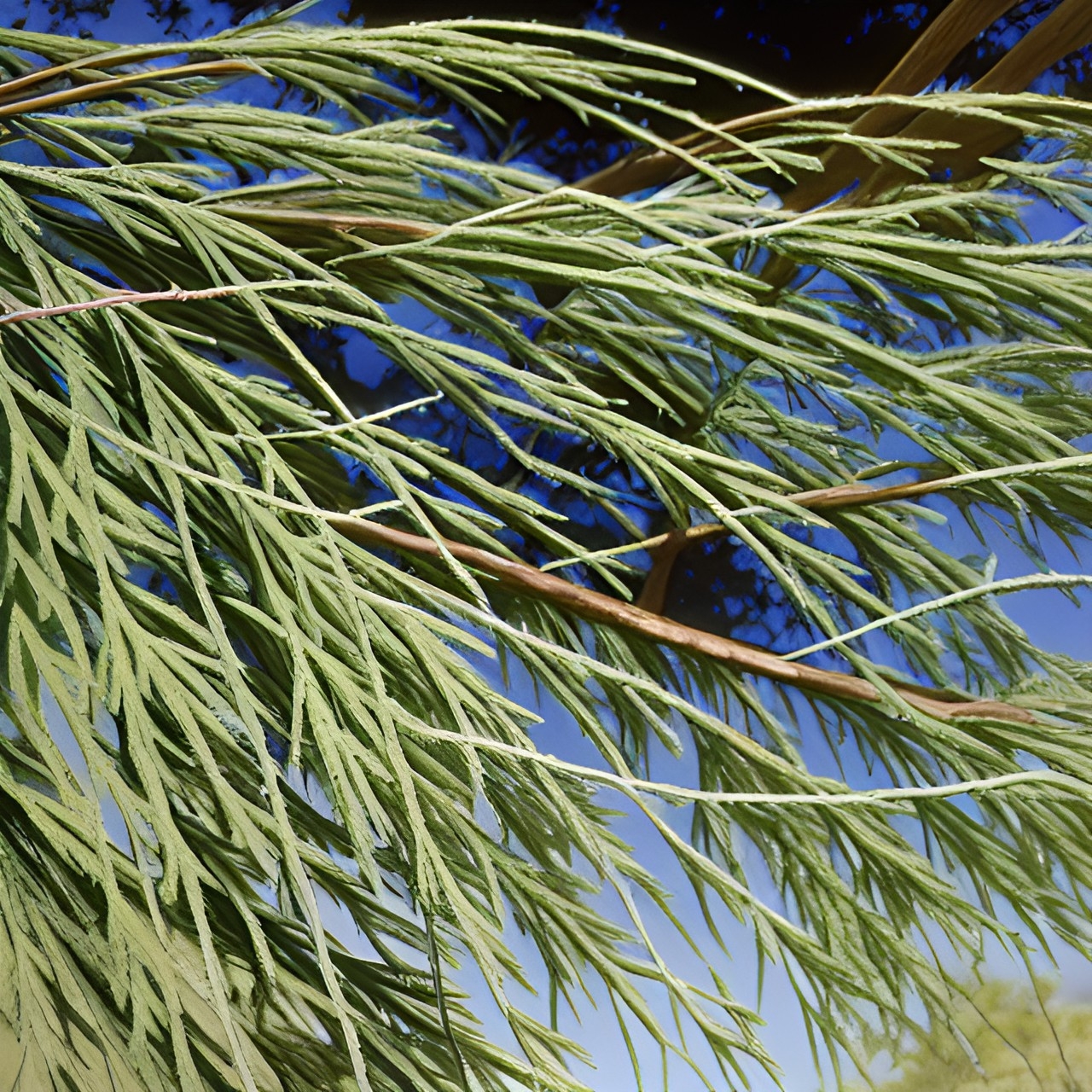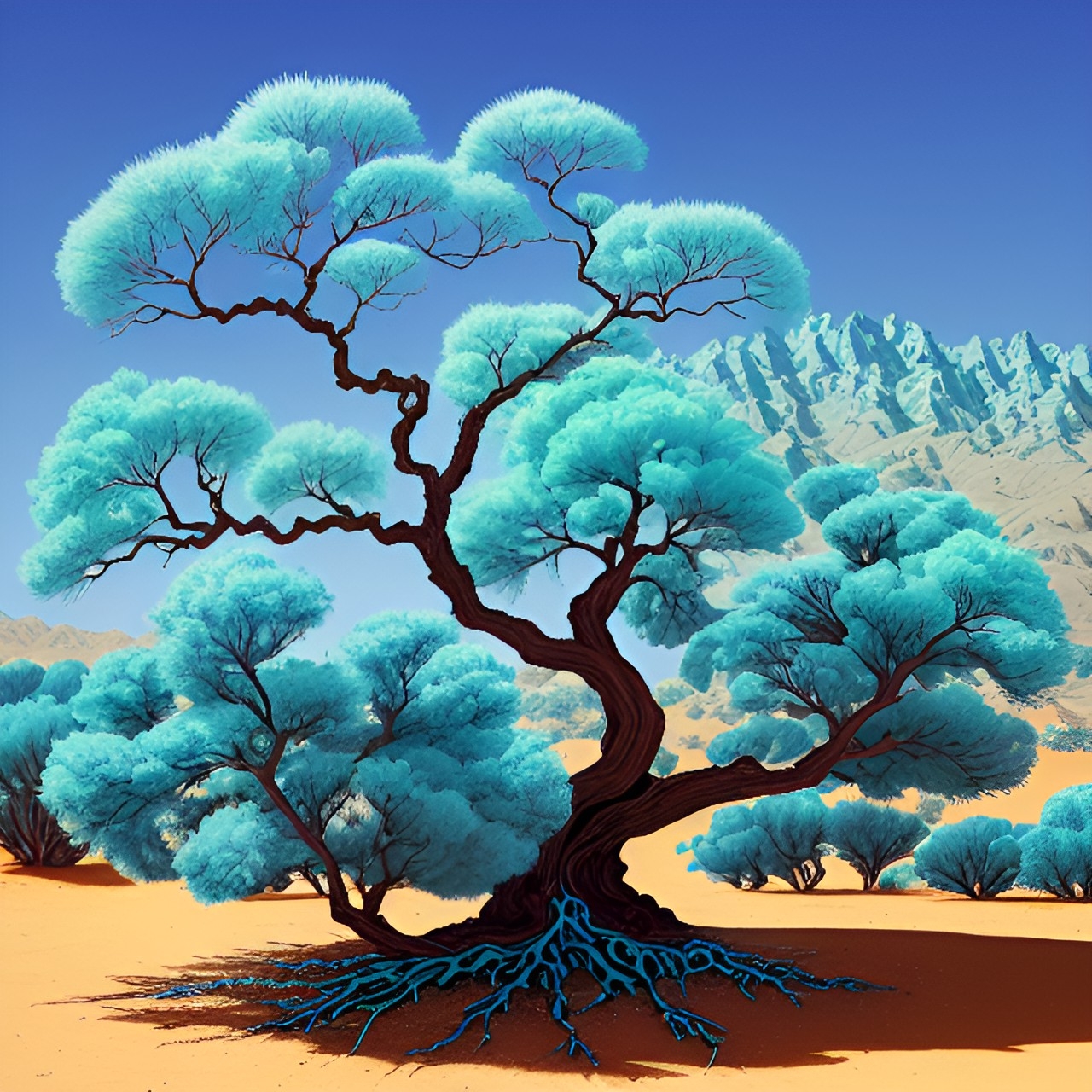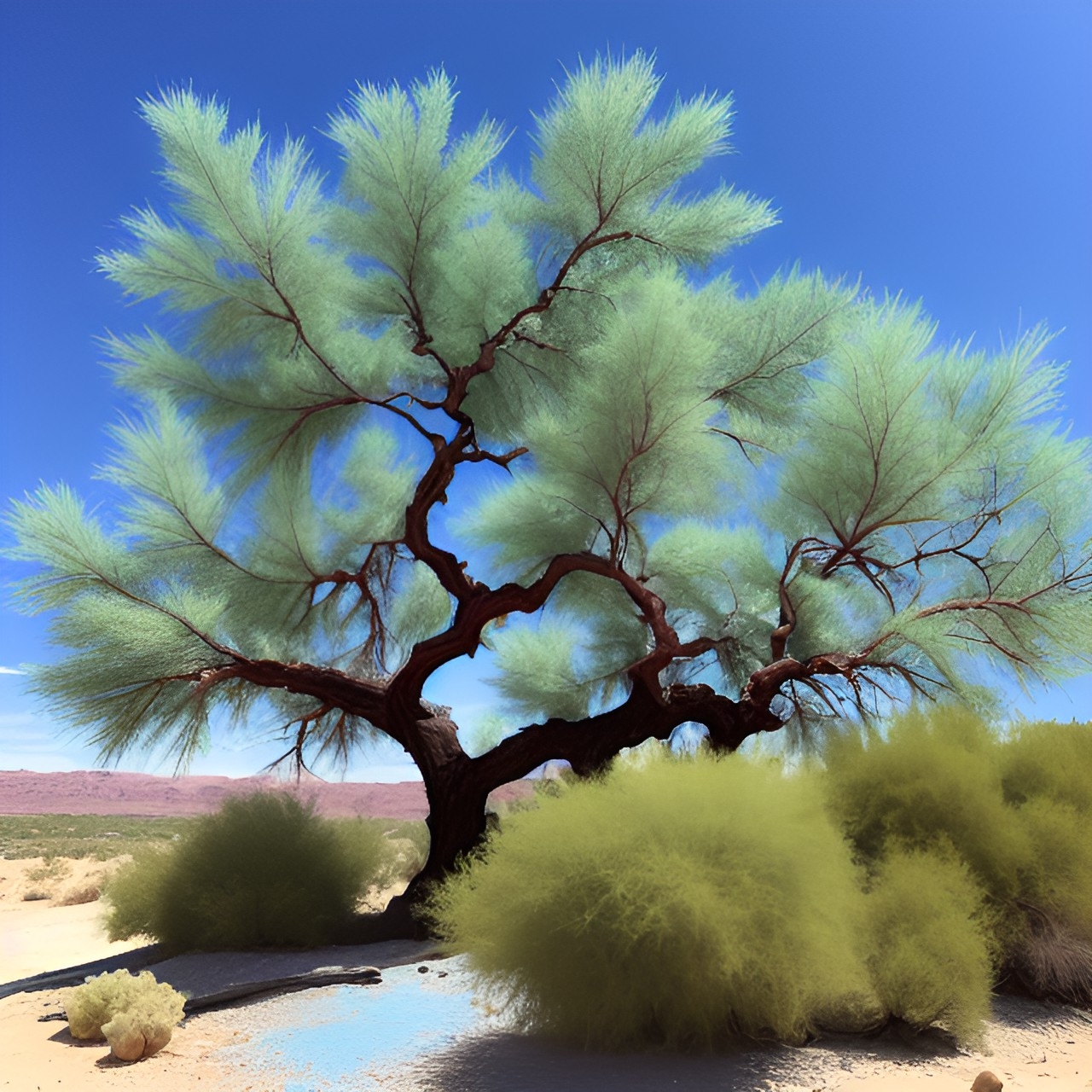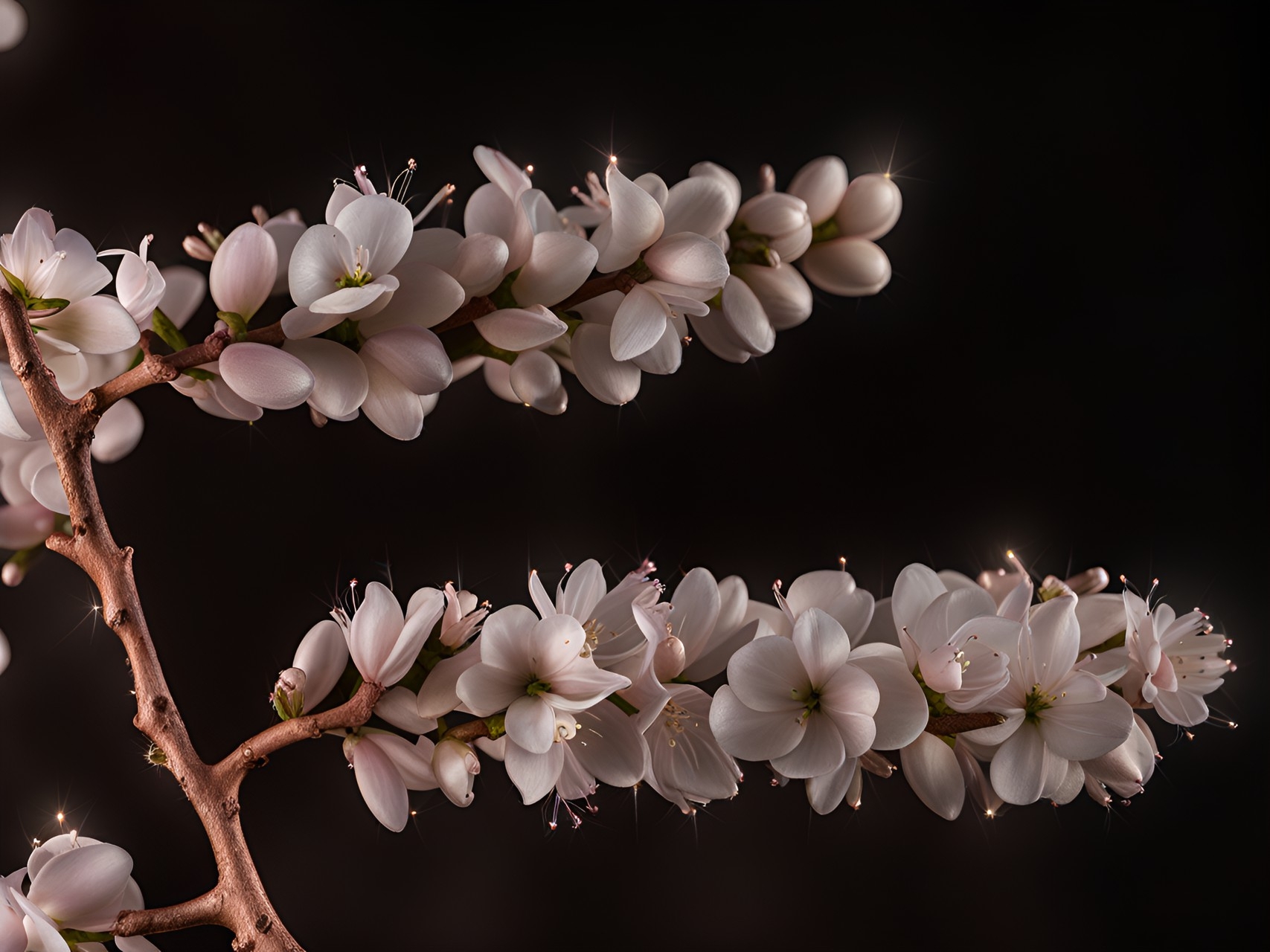Maliha Tamarisk
Beautiful and harsh like the unforgiving sands she is so fond of, Maliha Tamarisk is something to behold from afar. Her scaled leaves are unlike any other, tricking the eye into thinking her a pine stranded in the seas of sand. Yet no matter how dry or desolate or how lonesome the place she roots herself to she is always abundant in two things: water and salt. Don't be tempted by her waters if you invoke her fury! They are as salty and sickening as her rimy leaves. But how can we ever hold it against her? Any who have witnessed the departure of her seedlings on a summer evening will tell you, it is a sight like none other! Found in the coastal zones and salt marshes of the Shamsi Desert, Arabiyyah Desert and Parsa, the tamarisk is a twiggy tree with waxy, scale-like leaves and an extensive root system, pulling water from impressive depths beneath the sand--from the water table itself. But Maliha Tamarisk is perhaps most famous for the rimy salt its leaves seem to sweat and for its tendency to douse aggressors in salty, radioactive water!
This tree's Kaithur allows it to exude glowing white plasma from its leaves in order to protect itself. When activated, its leaves will appear to sweat white hot rime, raw radiant energy infused into the salt Tamarisk is known to excrete. Despite the danger, it's also rather beautiful and locals who plant these trees in their villages even gather to witness them release their airborne seeds in summer. Countless gleaming seed bulbs, brilliant and ethereal like miniature suns, take to the air and are released into the desert night. Its second kaithur allows it to store water inside of its roots and trunk, able to absorb this endlessly for later use. It can wield this magic like an Aura Manifestation.
|
Rithaldis' Skin
Thanks to Rithaldis' Skin, these trees are able to excrete ionizong radiation or photons so intense, it superheats the surrounding gases into plasma, seemingly sweating radioactive plasma.
Ithisda's Charge
Using Ithisda's Charge, Maliha Tamarisk can store up water inside their bodies including from magical attacks. They can convert this into magic energy, transfer the water or energy to another or re-release the water as an Aura. However, unlike other manifestations these casters cannot summon water, reliant on an outside source.
|
Anatomy |
These are evergreen trees with a spreading crown. Its leaves are tiny scales arranged alternatinglty across fine branchlets and overlapping each other, resembling coniferous leaves. Each leaf is extremely small, about 1-2 mm long, and hug the slender branches closely. Tamarisk leaves also exude salt, forming a crusted rimy layer which drips onto the ground.
|
Adaptions |
Even outside of magic, these trees have many adaptions to its environment. Most notable of these are the special glands in its leaves which excrete salt to rid itself of excess. It also excretes irradiated calcium into this concentrated salt solution, the basic substance absorbing carbon dioxide from the air and creating a layer of lime on the leaves. This doesn't easily wash off and imparts a light glow. As it drips to the ground, it discourages other plants from germinating in the soil around it too. The second most notable adaption are the tamarisk's deep roots, pairing well with it's ability to store water. These roots can reach to great depths of many meters into sandy soil, extracting water from a large area of soil. The roots spread both horizontally and vertically. |
Habitat |
Tamarisk usually grow in saline soils, making Parsa and the Shamsi Desert ideal for them. They grow in or alongside streams, waterways, bottom lands, banks, and drainage washes of water bodies, moist rangelands and pastures. Their salt tolerance comes from evolutionary developments, not kaithur, but even enables them to survive in salt pans, salt flats, coasts and alongside any body of water whether brackish or freshwater. |
Life Cycle |
Maliha Tamarisk reproduce sexually by seed which are then dispersed by wind, flood and animals. It may sometimes spread by suckering and rooting of buried stem segments that have broken off too. The small flowers are pink to white, blooming densely and covering the fine brances in the summer. Their petals are about 2mm long.
Each flower can produce thousands of tiny seeds in small capsules, each seed having a tufts of hair for wind dispersal. Seeds break free all at once on windy evenings, an eye catching spectacle as the tree imparts solar plasma into each bulb to protect it—countless tiny suns scattering into the night! Yet there are still many local species with resistances to solar magic which will readily gobble these up, few surviving their journey. And in order to germinate, seeds must saturate in damp soil especially older seeds. Freshly dispersed seeds germinate easily when they fall on wet soil but if they do not reach a suitable place, they lose their viability within a few weeks of dispersing. |
Uses |
Tamarisk trees are used ornamentally, as windbreaks and as shade trees. The wood is also useful for carpentry, bows made from their wood and ibex horns are extremely powerful. Tamarisk are also useful as fire barriers, naturally releasing a watery aura in response to fire. Even dry, their wood is difficult to burn as it's ash content is 30%-40% as well as because of the salt on its leaves. It will regrow after fire unless it's crown root is destroyed.
Thanks to its height and the shade it provides, capable of living without irrigation in harsh desert environments, this tree is often cultivated in the yards of homes in Arabiyy villages. There are even those who cultivate a substance called manna from the maliha tamarisk. Certain aphids with Ithisda's Touch are able to extract water from the tree without triggering it's defenses, secreting a sweet edible substance which imparts concentrated, drinkable water. Desert travelers have been known to survive off of manna. It is extremely hydrating and a natural sweetener. |










Comments